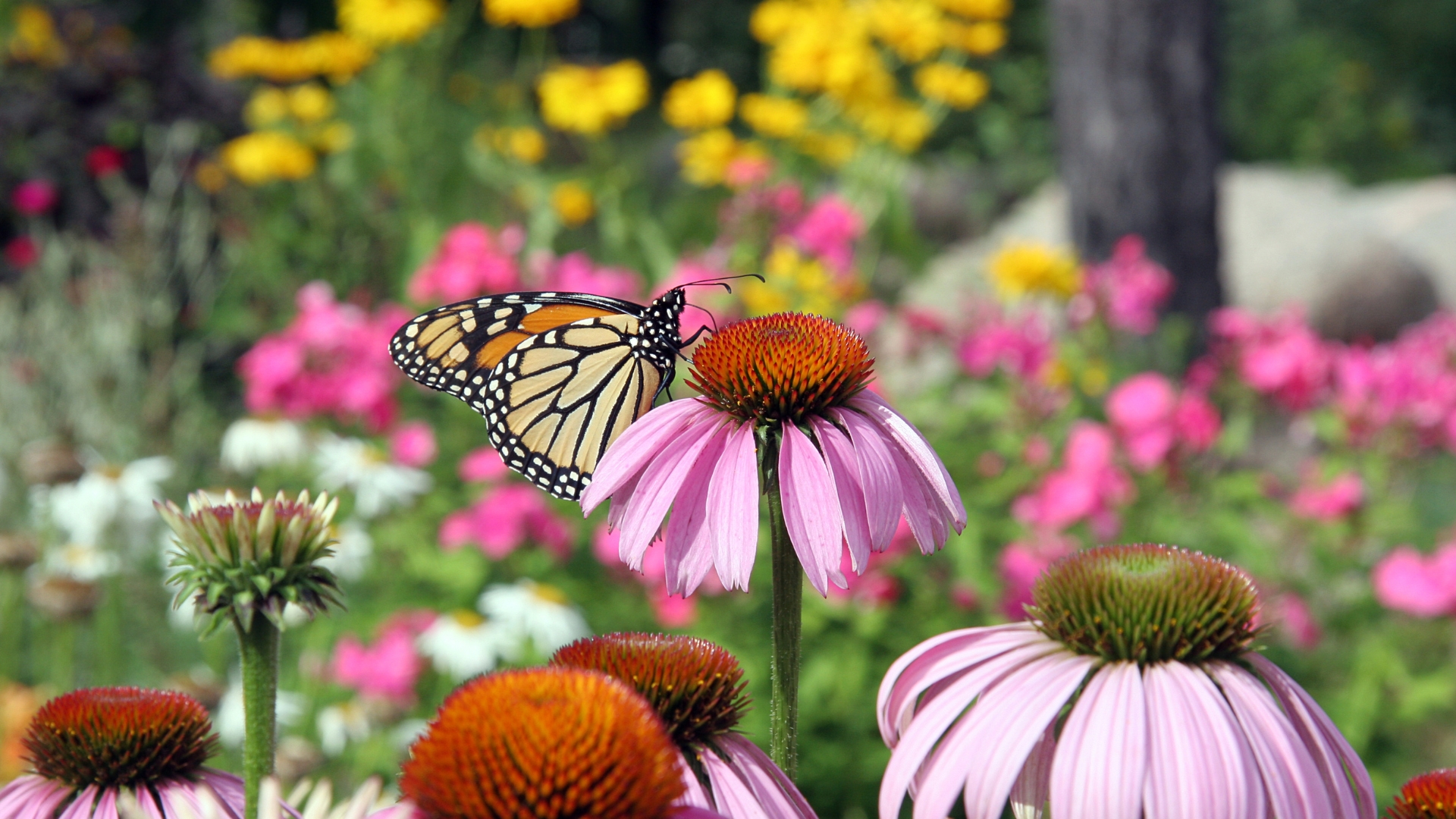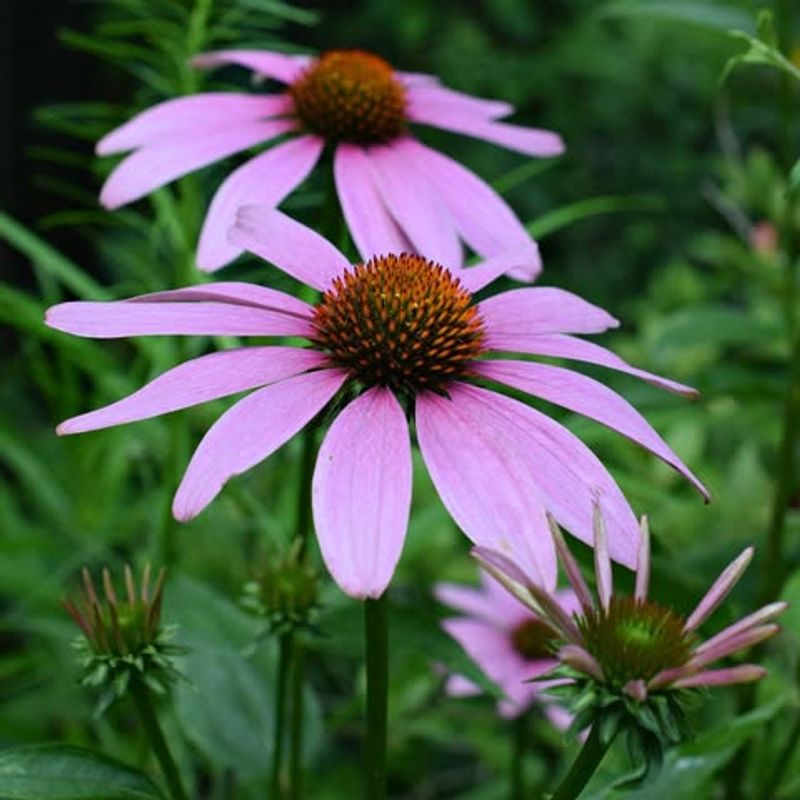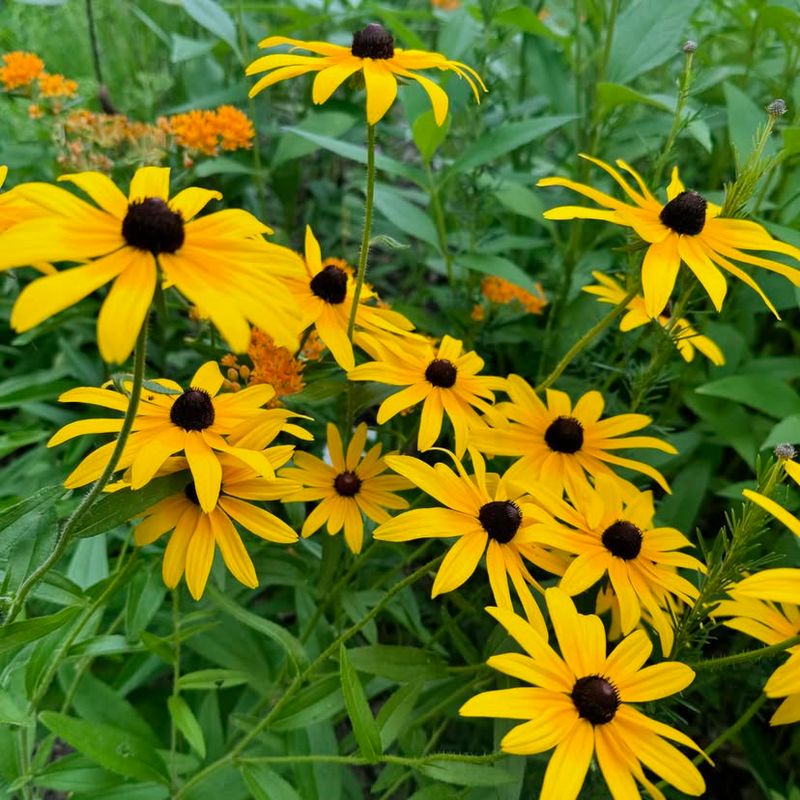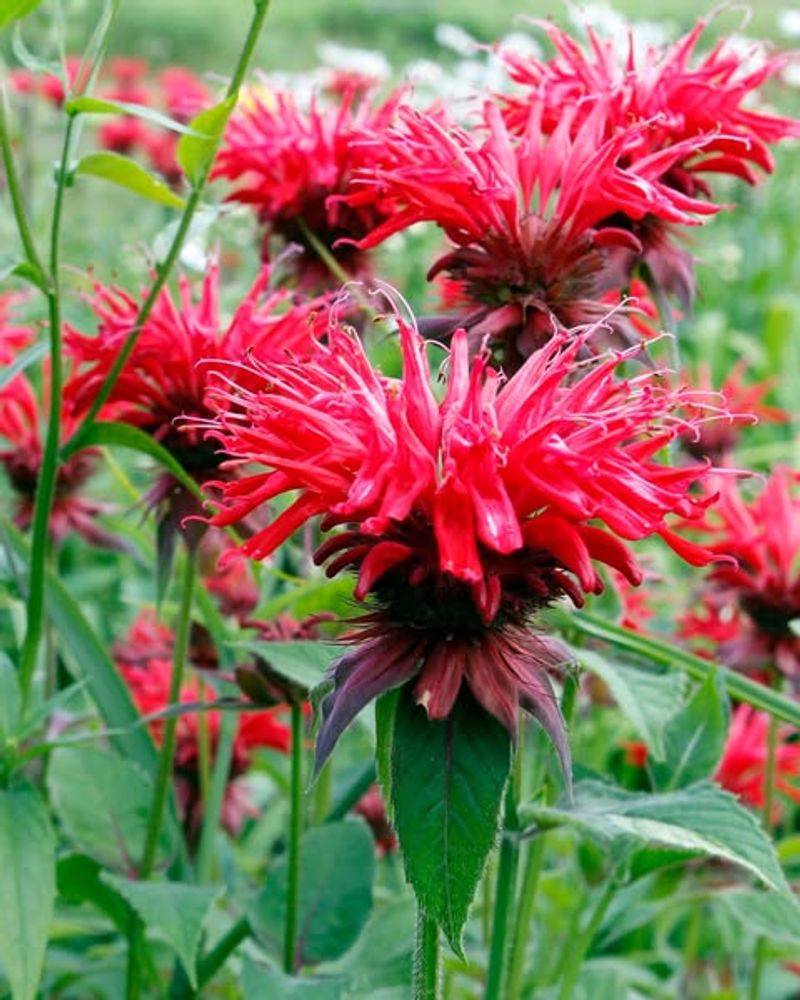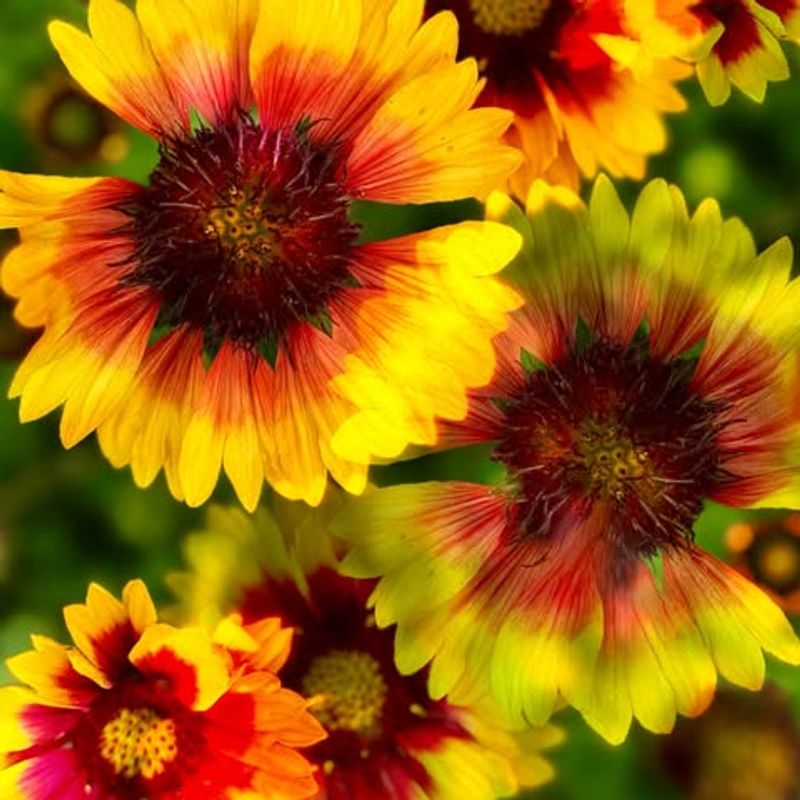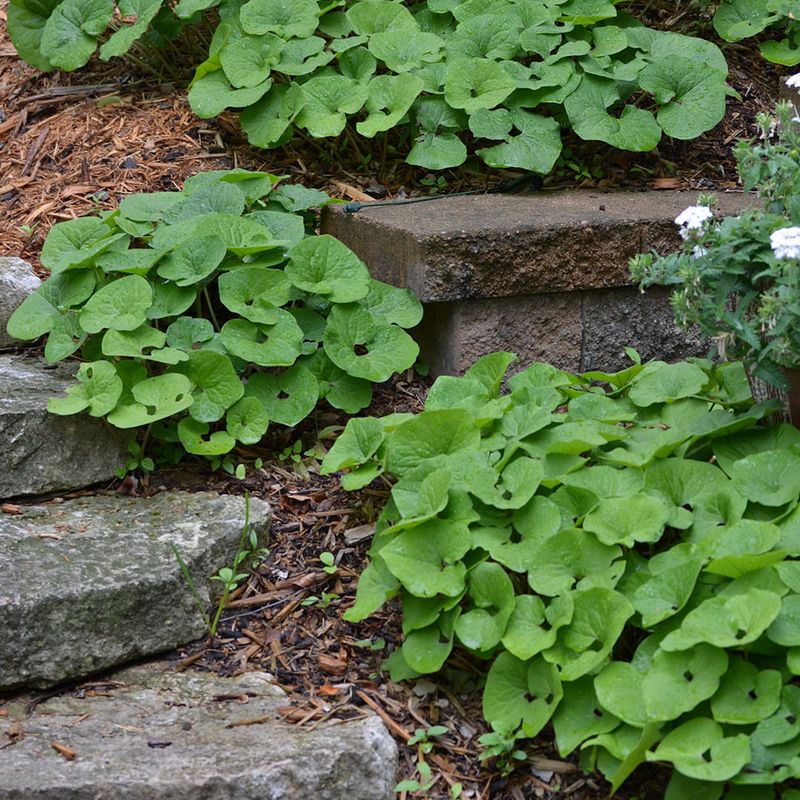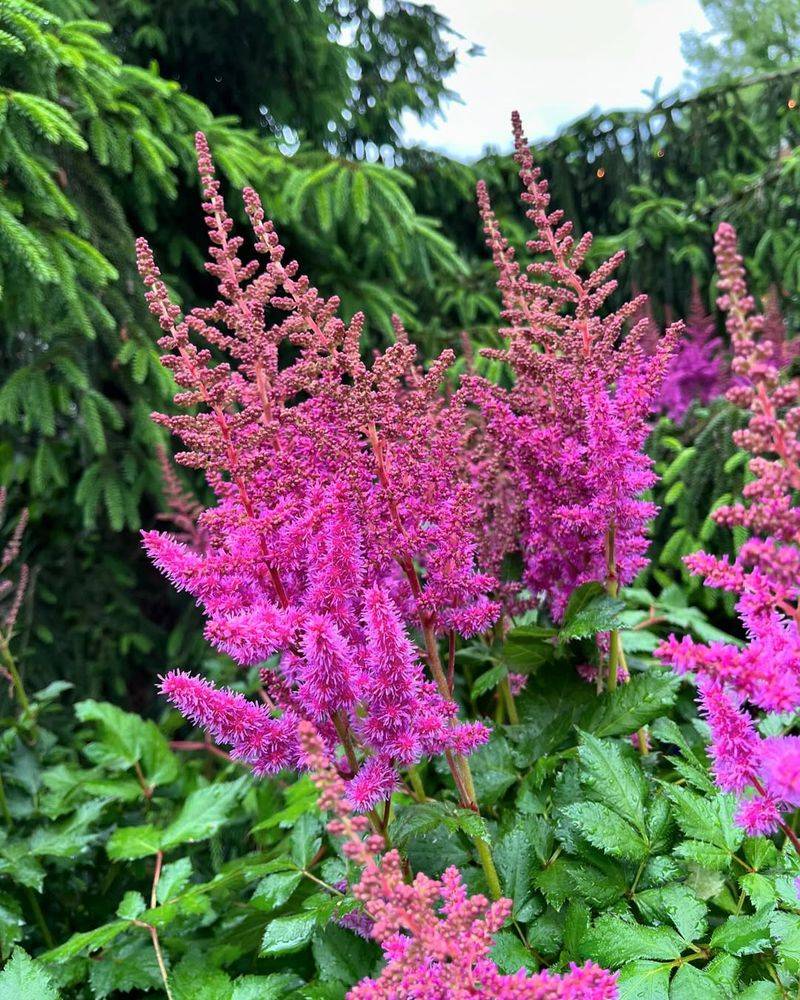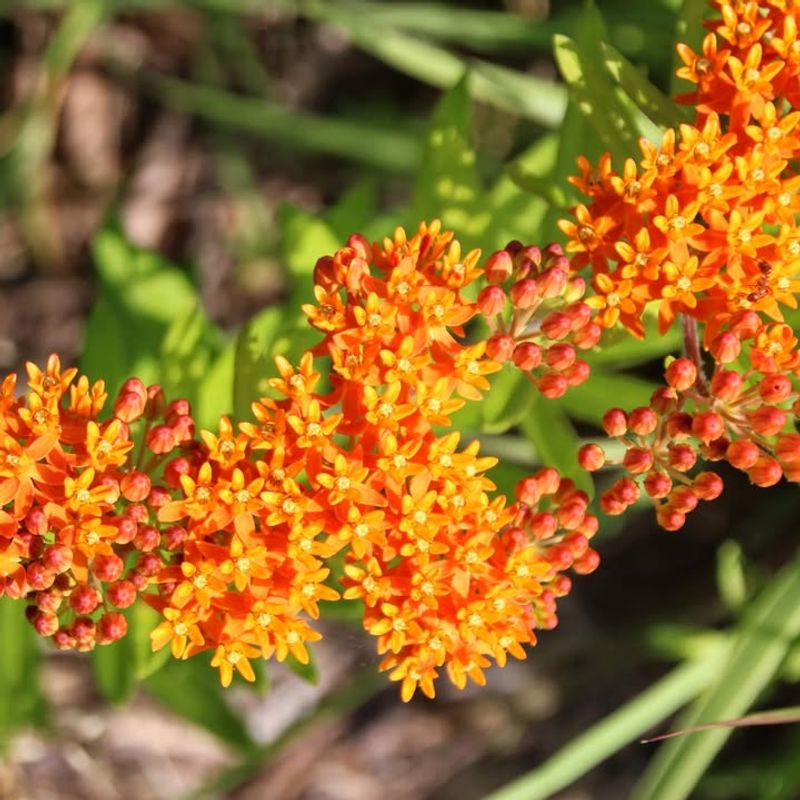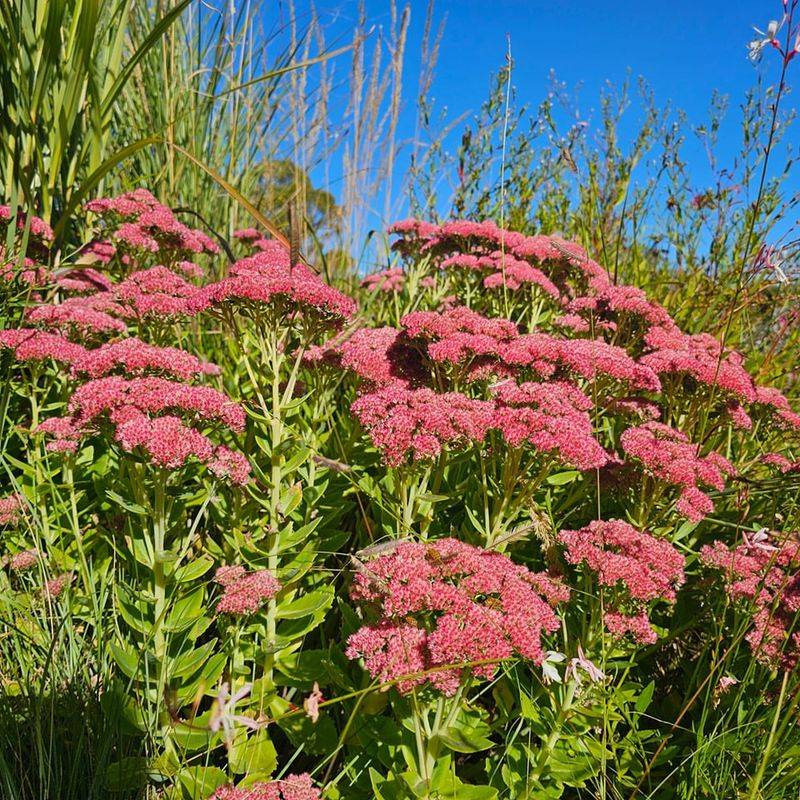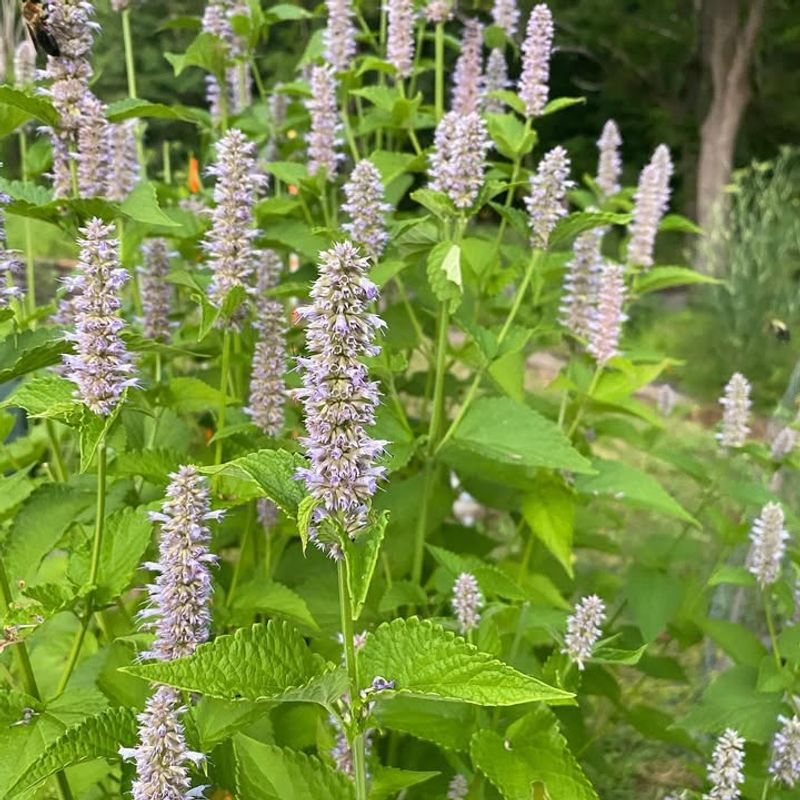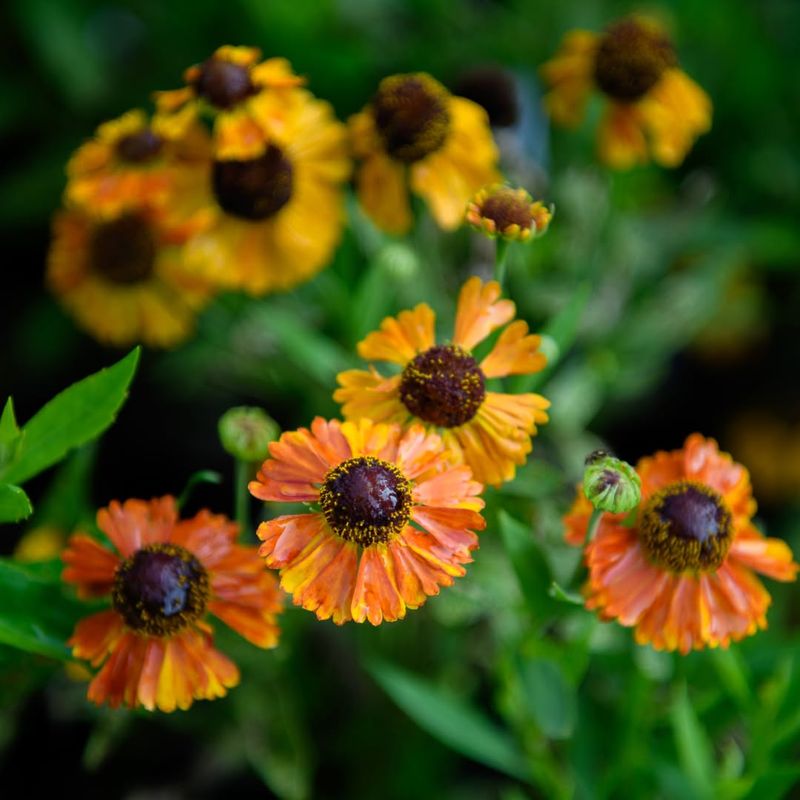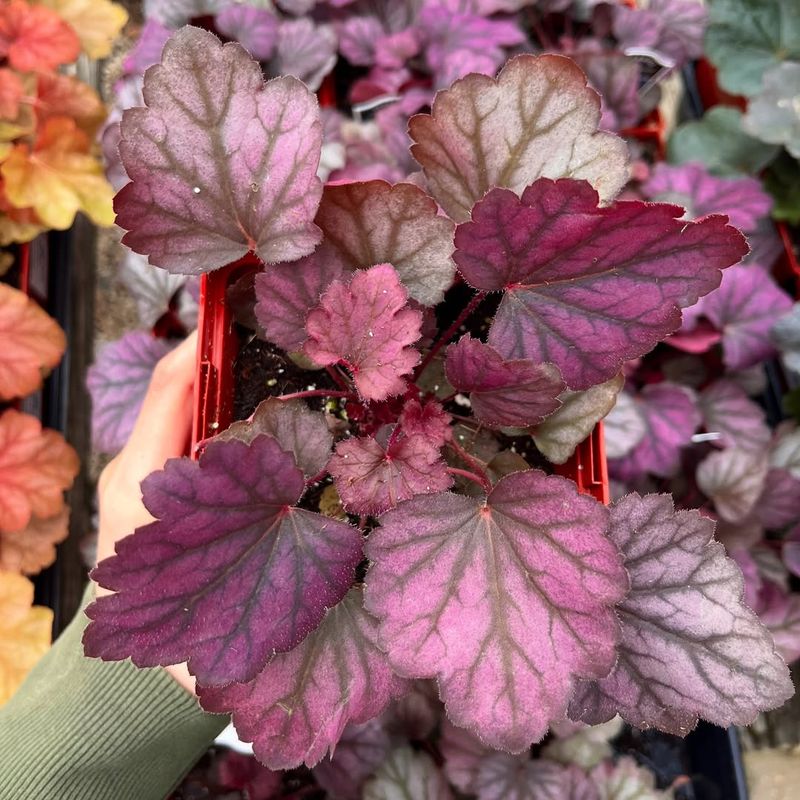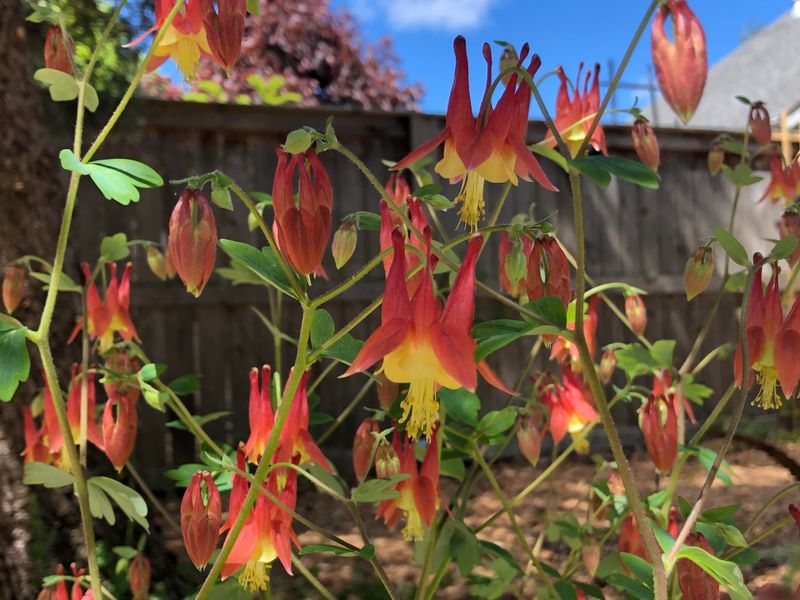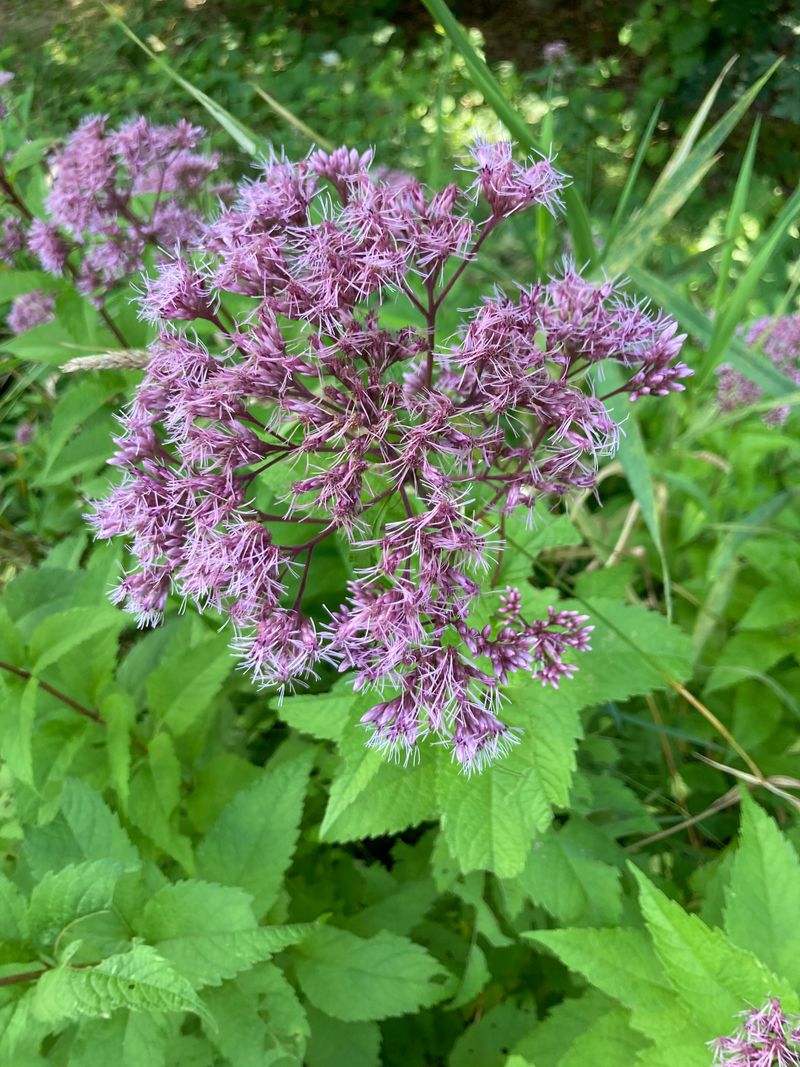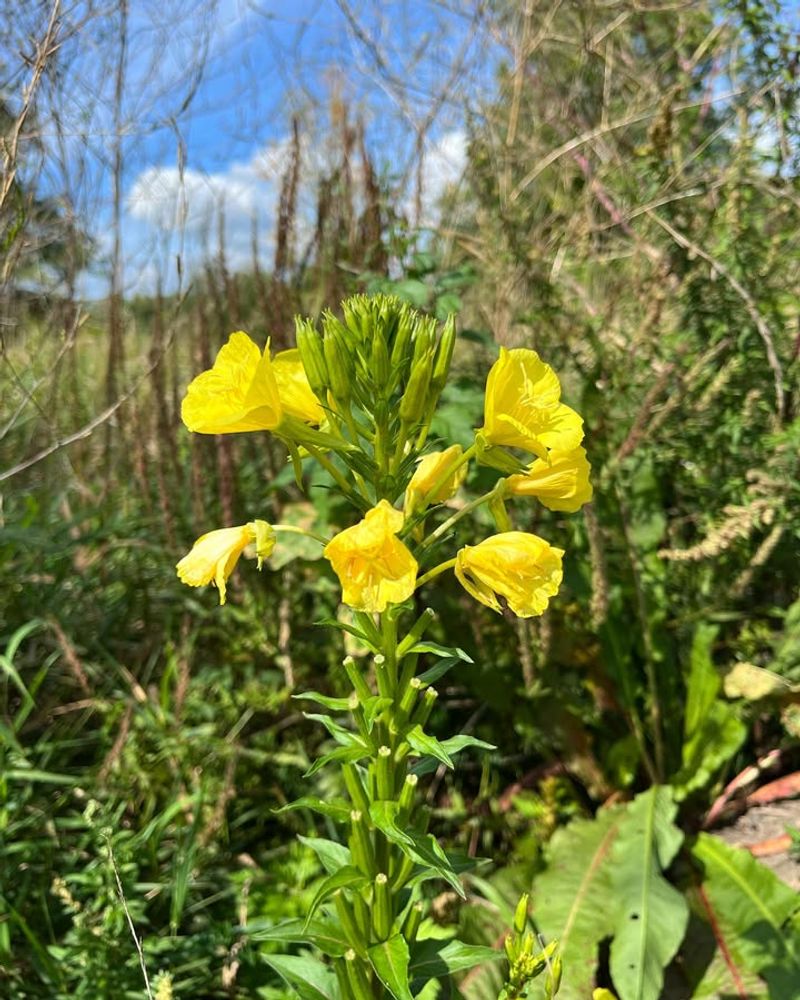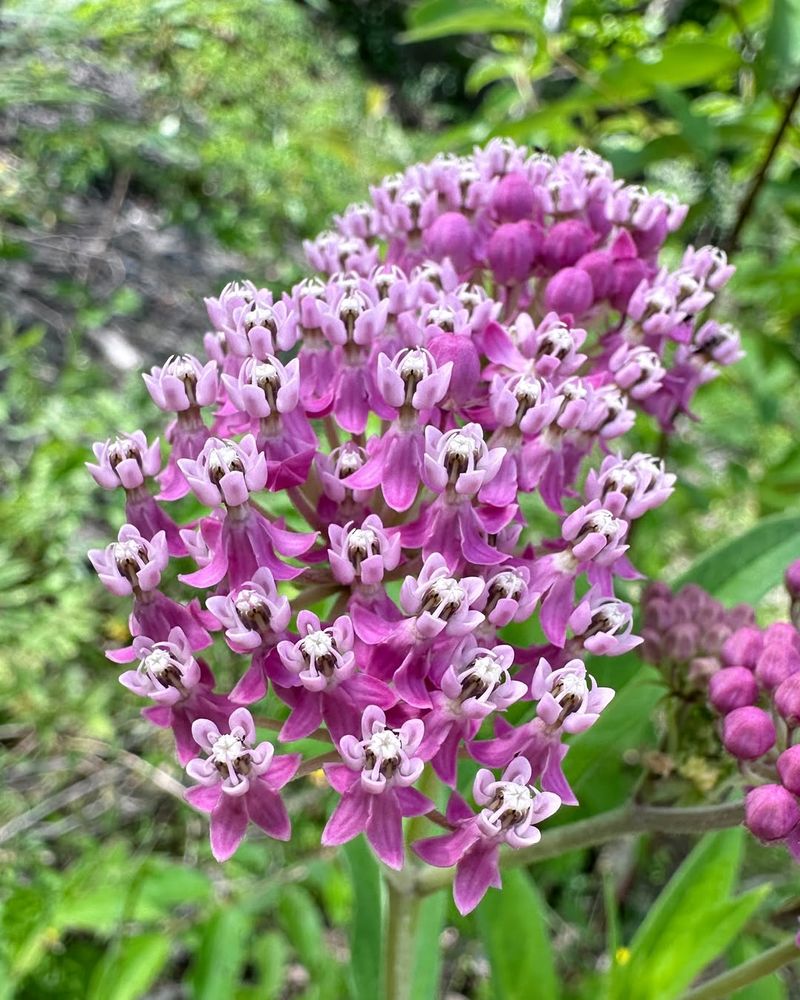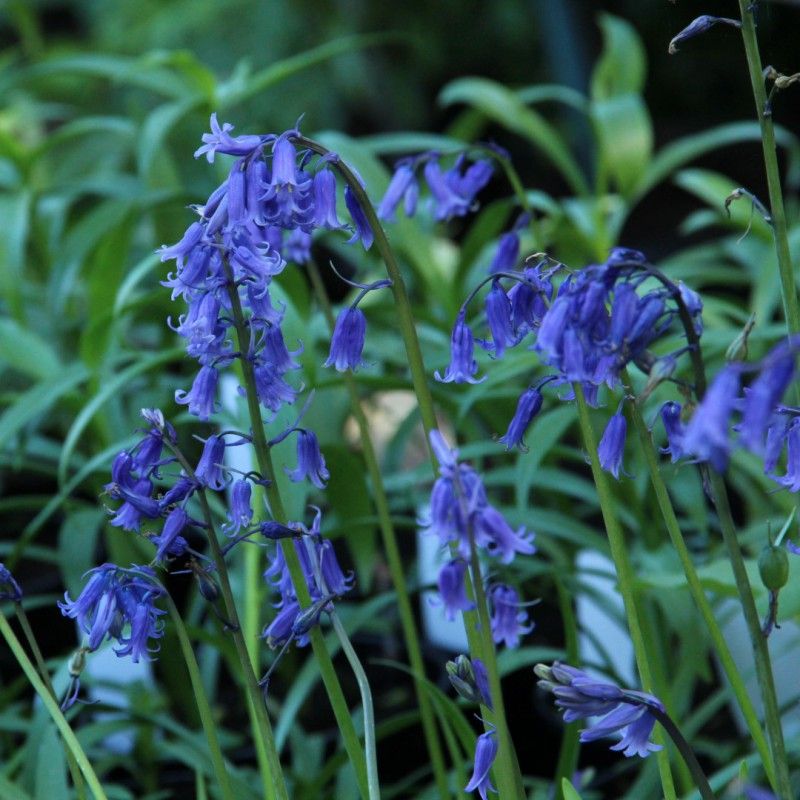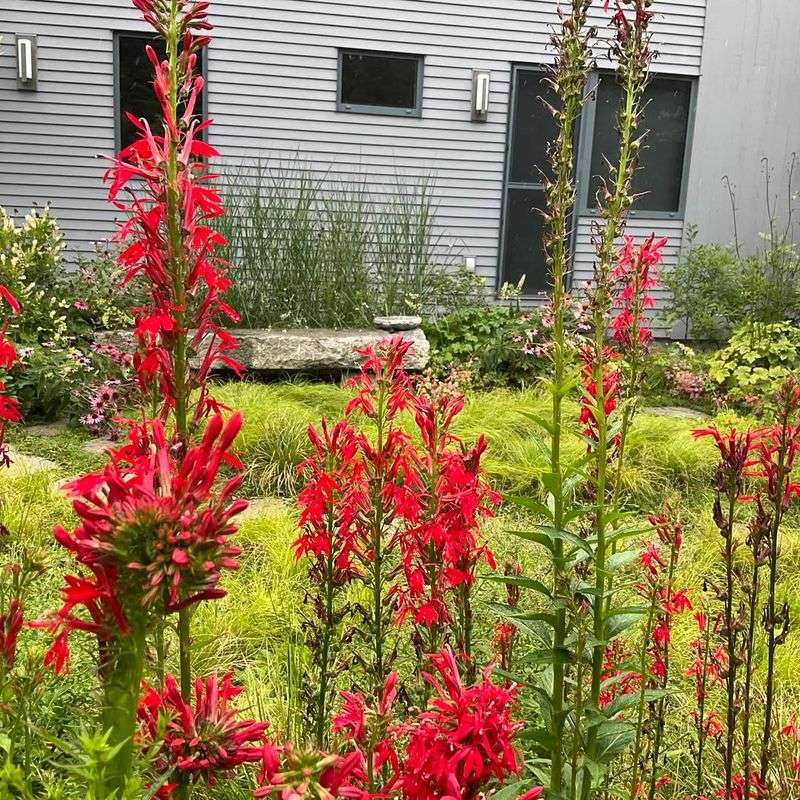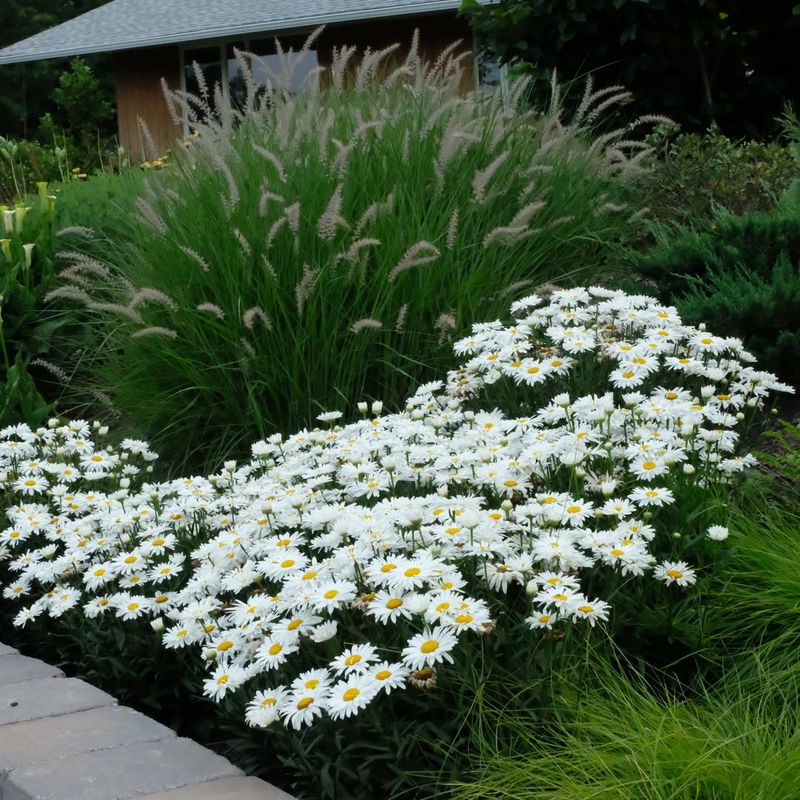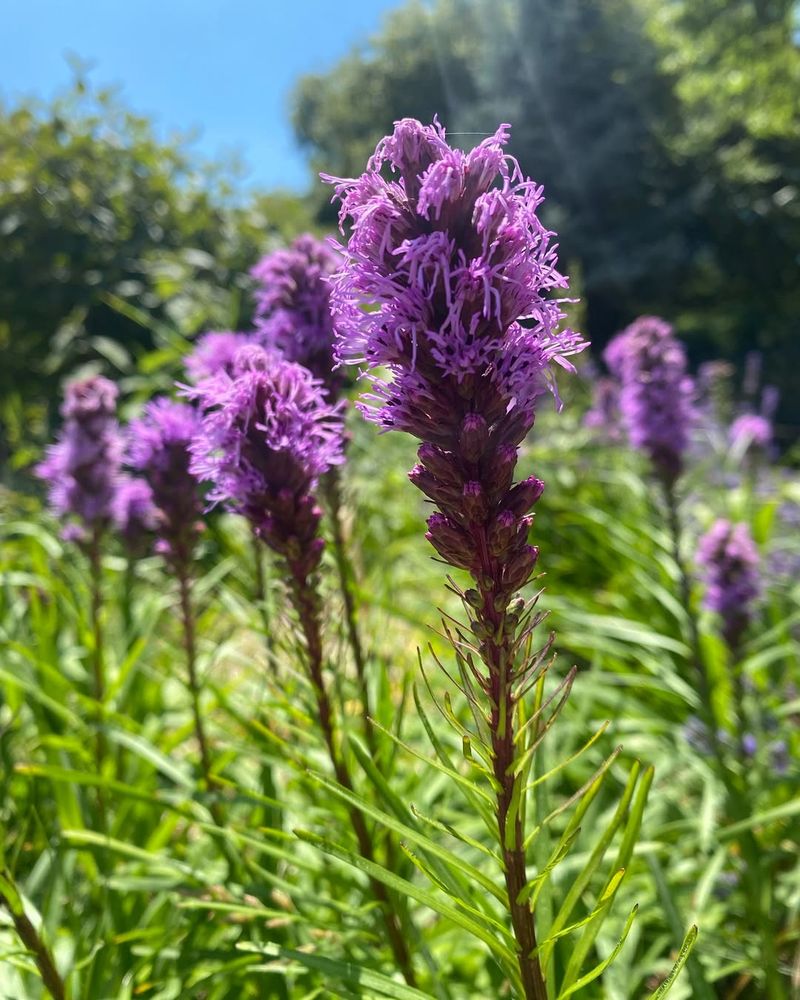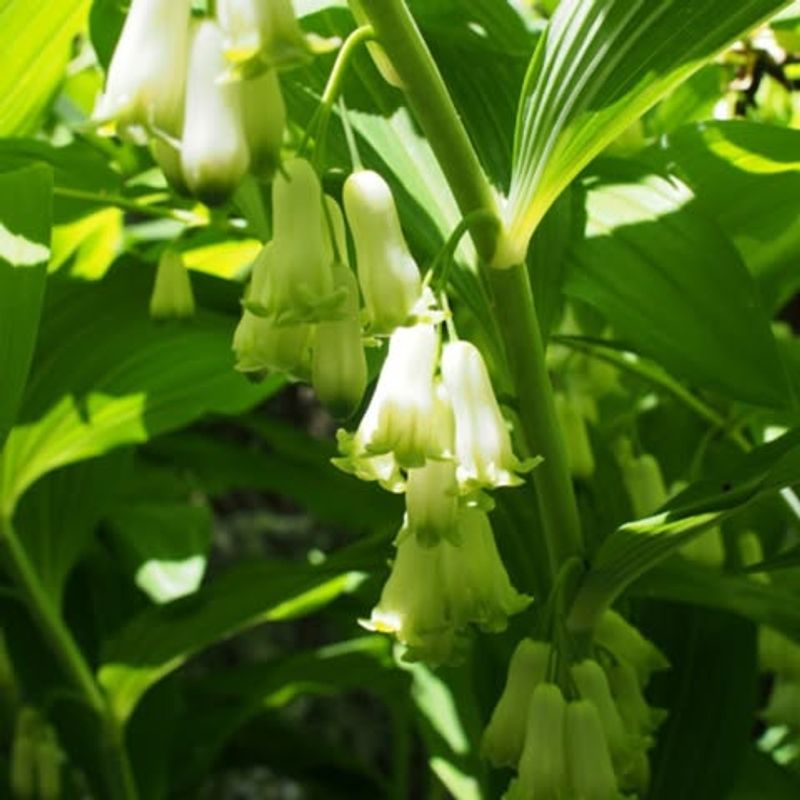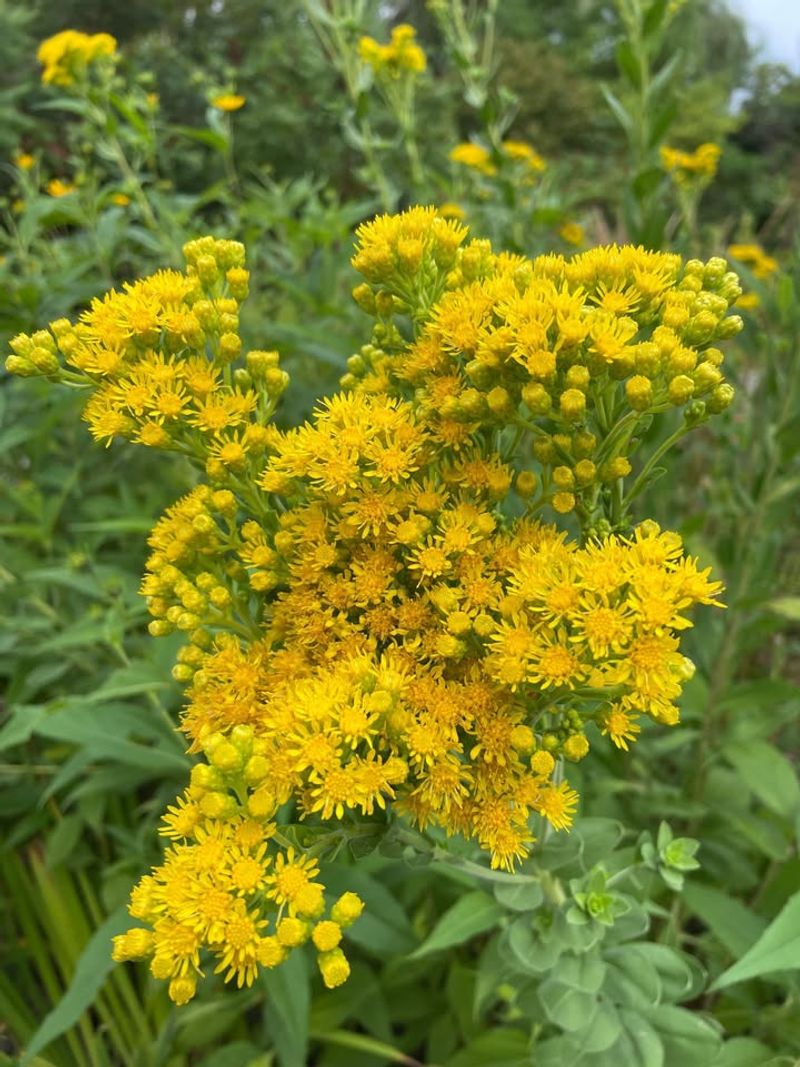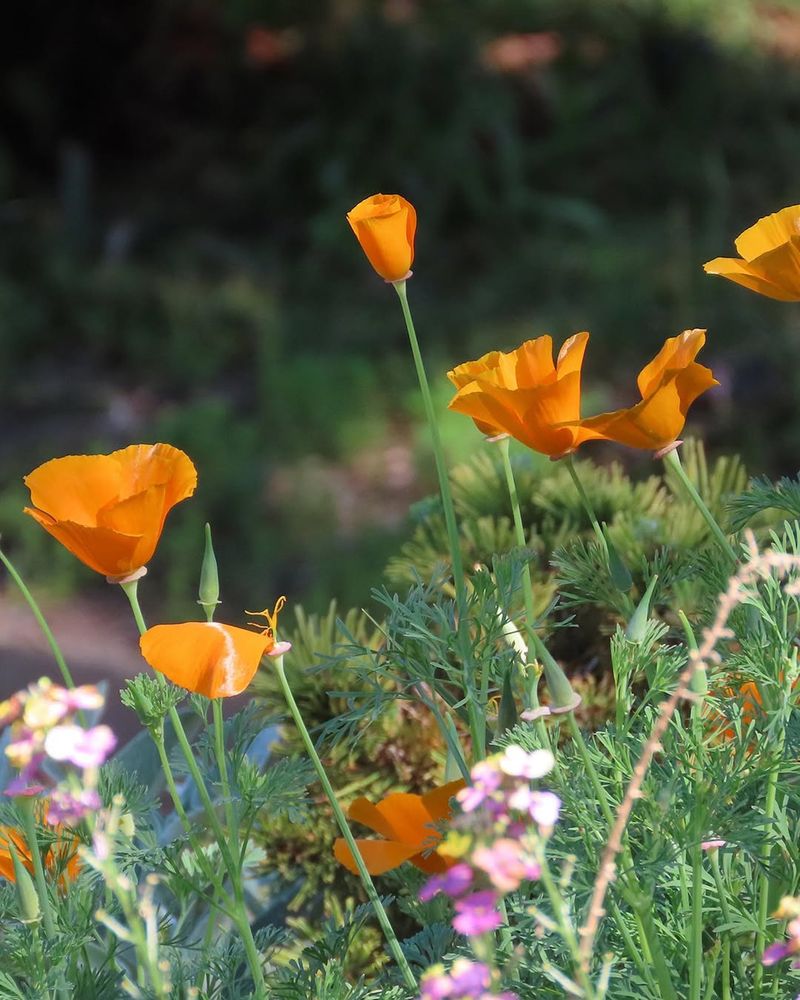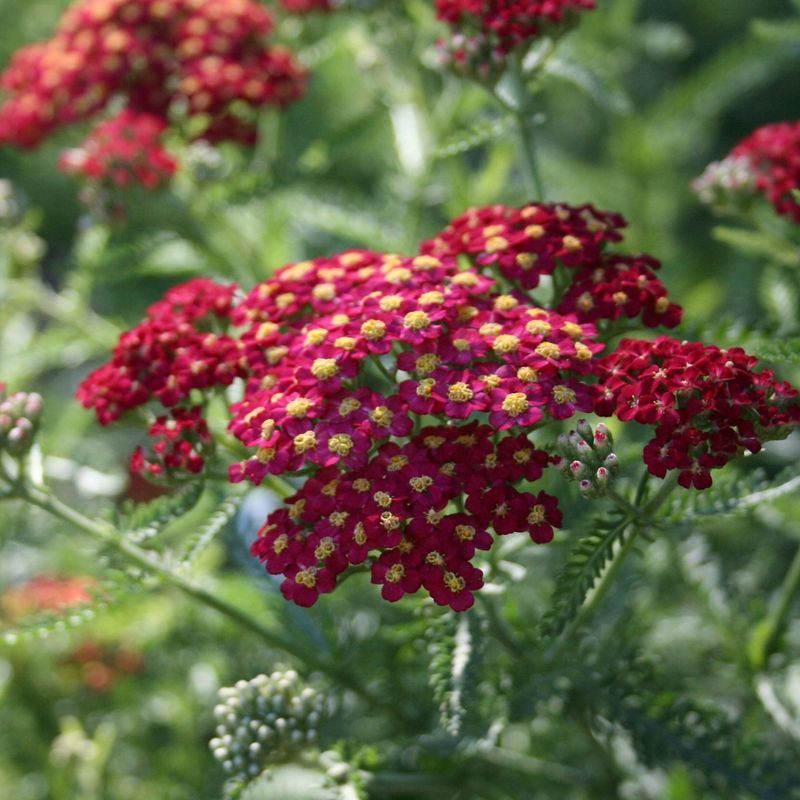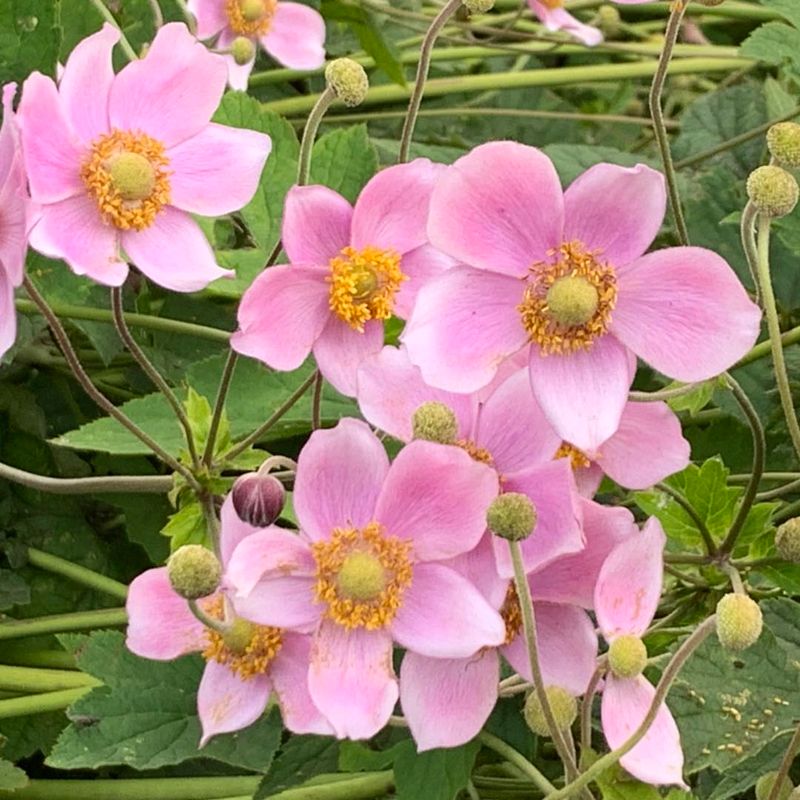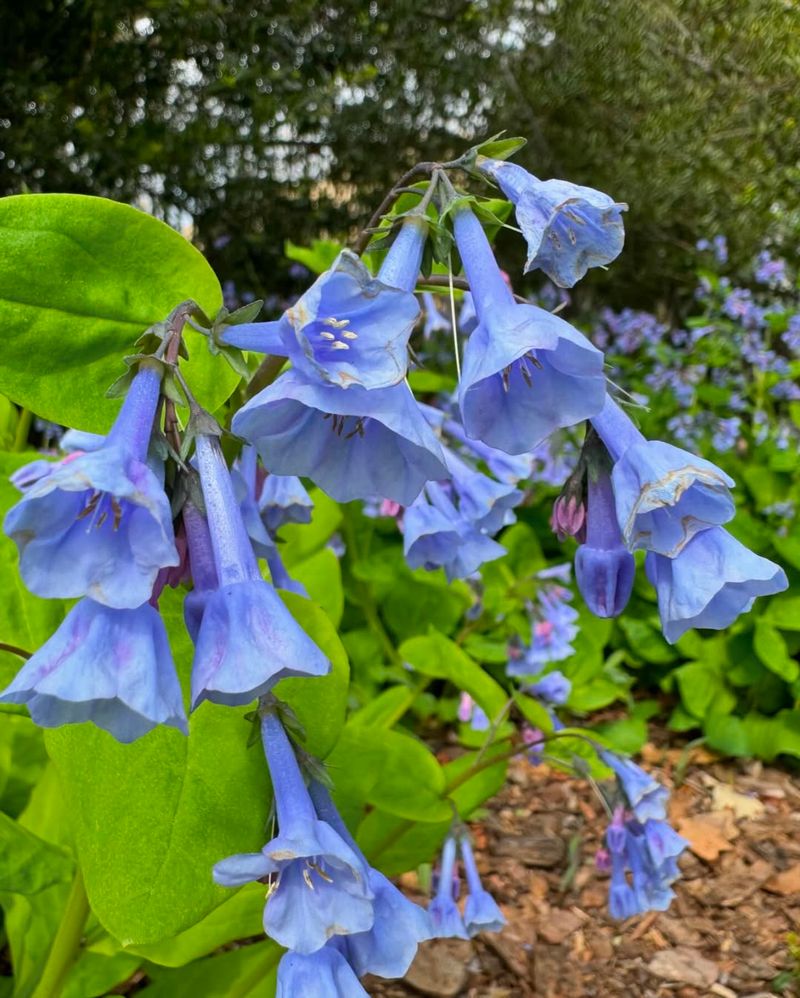Creating a sustainable garden isn’t just about lush blooms; it’s about crafting a thriving ecosystem where every plant plays its part. In my pursuit of the perfect perennial, I’ve discovered treasures that do more than just please the eye—they nourish the soil, attract pollinators, and enhance biodiversity. Today, I’m excited to share 28 perennials that have transformed my garden into a sanctuary of life.
1. Purple Coneflower (Echinacea purpurea)
Purple Coneflowers are the embodiment of resilience and beauty. Their striking purple petals and golden centers invite bees and butterflies, turning your garden into a buzzing hub of activity.
These hardy plants thrive in various conditions, making them perfect for any garden. Their seeds also provide food for birds, especially in the colder months.
Echinacea is renowned not only for its beauty but also for its medicinal properties. It’s a staple in herbal remedies, offering a touch of wellness right in your backyard.
2. Black-eyed Susan (Rudbeckia hirta)
With bold yellow petals and a dark central eye, Black-eyed Susans are a beacon for pollinators. They bring vibrant color and life to any garden landscape.
These perennials are incredibly easy to grow and maintain, thriving in diverse conditions. Their long blooming season ensures a splash of color for months.
Beyond aesthetics, they play a crucial role in supporting local wildlife, providing nectar for bees and butterflies, and seeds for birds. Rudbeckia is a gardener’s favorite for creating a lively and sustainable environment.
3. Bee Balm (Monarda didyma)
Few plants are as mesmerizing as the vivid red blooms of Bee Balm. Known for attracting hummingbirds, bees, and butterflies, it’s a powerhouse in promoting pollinator activity.
Bee Balm’s aromatic leaves can be used in teas, adding utility to its ornamental appeal.
This perennial’s ability to thrive in various climates and soil types makes it a versatile addition to any sustainable garden. Its stunning flowers not only add visual interest but also foster a nurturing environment for essential garden visitors.
4. Blanket Flower (Gaillardia aristata)
Like a fiery sunset captured in petals, Blanket Flowers illuminate gardens with their rich reds and yellows. Their vibrant colors are a magnet for butterflies and bees.
These hardy perennials are drought-tolerant and thrive in poor soils, making them a low-maintenance choice for sustainability.
Gaillardia’s long blooming season ensures a continuous display of color, while its flowers provide essential nectar for pollinators. A garden with Blanket Flowers is a lively space teeming with life and color.
5. Wild Ginger (Asarum canadense)
In the dappled shade of a woodland garden, Wild Ginger creates a lush carpet of heart-shaped leaves. Its subtle beauty is complemented by its role in preventing soil erosion.
This perennial is an excellent ground cover, thriving in shaded areas where other plants may struggle.
Beyond aesthetics, Wild Ginger’s rhizomes are historically significant, having been used by Native Americans for their medicinal properties. A garden with Wild Ginger is a harmonious blend of beauty and heritage.
6. Astilbe
With their feathery plumes, Astilbes add a touch of elegance to any garden setting. Their delicate flowers come in various shades, creating a soft, romantic atmosphere.
Astilbes thrive in moist, shaded areas, making them an ideal choice for less sunny spots in your garden.
These perennials not only beautify the landscape but also support a diverse ecosystem. By providing nectar for pollinators, Astilbes play an integral part in a sustainable garden’s health.
7. Butterfly Weed (Asclepias tuberosa)
Bursting with bright orange blossoms, Butterfly Weed is a magnet for monarch butterflies. This perennial is crucial for their survival, as it provides essential nutrients.
Butterfly Weed’s drought-tolerant nature makes it a resilient choice for any eco-friendly garden.
Asclepias is not just a feast for the eyes but also a vital component in supporting butterfly populations. By planting Butterfly Weed, you contribute to the conservation of these beautiful creatures.
8. Autumn Joy Sedum (Sedum ‘Autumn Joy’)
In the autumn garden, few plants can match the striking presence of Autumn Joy Sedum. Its rich pink flowers gradually deepen to a warm copper hue, adding seasonal interest.
This perennial is highly adaptable, thriving in both poor soil and drought conditions, making it a sustainable choice.
Beyond its beauty, Sedum provides late-season nectar for bees and butterflies, ensuring a vibrant garden habitat even as the year winds down. It’s a steadfast companion for sustainable gardeners.
9. Anise Hyssop (Agastache foeniculum)
With its fragrant, licorice-scented leaves, Anise Hyssop offers an enchanting experience. Its tall spires of purple blooms are a favorite among bees and butterflies.
This perennial is drought-tolerant and thrives in well-drained soil, making it ideal for sustainable gardening.
Agastache’s dual role as an ornamental and culinary herb makes it a versatile plant. Its flowers and leaves can be used in teas, providing a flavorful addition to your garden harvest.
10. Helenium
Helenium bursts onto the summer scene with fiery hues of red, yellow, and orange. Their vibrant blooms are irresistible to bees and other pollinators, ensuring a lively garden.
These perennials are tough and adaptable, thriving in sunny locations and various soil types.
Besides their visual appeal, Heleniums offer essential support to the ecosystem, providing nectar and pollen for garden visitors. Their presence adds both color and life to a sustainable garden.
11. Coral Bells (Heuchera)
Coral Bells captivate with their colorful foliage, ranging from deep purples to vibrant greens. Their flowers, though dainty, are a beacon for bees and hummingbirds.
These perennials thrive in shaded areas, providing a splash of color where sunlight is scarce.
Heuchera’s versatility and beauty make it a favorite among gardeners. It’s an excellent choice for adding texture and visual interest to a sustainable garden, while also supporting local wildlife.
12. Prairie Dropseed (Sporobolus heterolepis)
Prairie Dropseed dances gracefully in the wind, its fine-textured blades creating a soft, flowing landscape. This ornamental grass is a staple in sustainable gardening.
It thrives in sunny locations and requires minimal maintenance, showcasing resilience in various environmental conditions.
Besides its aesthetic appeal, Sporobolus provides excellent habitat for wildlife, supporting both insects and birds. Prairie Dropseed is a testament to the beauty and function of native grasses.
13. Columbine (Aquilegia canadensis)
Columbines are as whimsical as they are charming, with unique spurred petals that captivate the eye. Their blooms are a favorite among hummingbirds.
These perennials thrive in part-shade to full sun, offering versatility to gardeners seeking to create a dynamic landscape.
Aquilegia’s diverse range of colors and forms makes them a treasured addition to any garden. They bring both beauty and ecological benefit, supporting pollinators with their nectar-rich flowers.
14. Joe Pye Weed (Eutrochium purpureum)
Joe Pye Weed stands tall and proud in the garden, its clusters of pinkish-purple flowers attracting an array of pollinators.
This perennial thrives in moist soil, making it perfect for wetland or rain gardens. Its towering presence adds structure and height to any planting scheme.
Eutrochium is a magnet for butterflies and bees, supporting biodiversity. Planting Joe Pye Weed is an act of stewardship, enhancing your garden’s ecological health.
15. Evening Primrose (Oenothera biennis)
As dusk falls, Evening Primrose opens its delicate yellow blooms, creating a magical nighttime garden display.
This biennial thrives in various soil types, showcasing resilience in challenging environments.
Oenothera’s blooms attract moths and other nighttime pollinators, adding a unique ecological dimension to your garden. Evening Primrose is not only a visual delight but also a vital part of the nocturnal ecosystem.
16. Swamp Milkweed (Asclepias incarnata)
In the moist fringes of a garden, Swamp Milkweed offers its pink blooms as a lifeline to monarch caterpillars.
This perennial thrives in wet conditions, making it ideal for rain gardens or naturalized areas.
Asclepias incarnata plays an essential role in supporting butterfly populations, specifically as a host plant for monarchs. Its presence in the garden promotes a healthy, balanced ecosystem, vital for sustainability.
17. Wild Bluebell (Hyacinthoides non-scripta)
Like a sea of blue cascading through the woods, Wild Bluebells create enchanting spring displays.
These perennials thrive in shaded areas, making them ideal for woodland gardens. Their bell-shaped blooms sway gently, attracting early pollinators.
Hyacinthoides brings a touch of magic to any garden, with its captivating color and form. Its presence supports early-season pollinators, contributing to a thriving garden ecosystem.
18. Lobelia (Lobelia cardinalis)
Lobelia cardinalis boasts striking red flowers that stand out in any garden setting. These blooms are a magnet for hummingbirds.
This perennial thrives in moist areas, making it ideal for wetland or rain gardens.
Lobelia’s vivid color and form add drama to the landscape, while its ecological benefits contribute to a healthy garden environment. It’s a stunning choice for gardeners seeking to enhance biodiversity.
19. Shasta Daisy (Leucanthemum x superbum)
Shasta Daisies bring classic beauty to gardens with their pristine white petals and sunny yellow centers.
These perennials are renowned for their hardiness, thriving in well-drained soil and full sun. Their cheerful blooms attract bees and butterflies, supporting pollinator activity.
Leucanthemum’s simplicity and elegance make it a timeless choice for gardeners. Shasta Daisies contribute to a lively, thriving garden environment while adding a touch of classic charm.
20. Liatris (Liatris spicata)
Liatris captivates with its tall, spiky blooms that seem to reach toward the sky. Their vibrant purple color draws in butterflies and bees.
These perennials are drought-tolerant and thrive in various soil conditions, making them a sustainable choice for eco-conscious gardeners.
With its striking form and color, Liatris adds vertical interest to any garden. Its presence supports a diverse array of pollinators, enhancing the overall health of your garden ecosystem.
21. Solomon’s Seal (Polygonatum biflorum)
In the quiet corners of a garden, Solomon’s Seal arches gracefully, its bell-like flowers nodding gently.
This perennial thrives in shaded areas, offering elegance and understated beauty. Its foliage turns golden in autumn, adding seasonal interest.
Polygonatum supports a range of wildlife, providing habitat and food sources. Its subtle charm and ecological benefits make it a cherished addition to sustainable gardens.
22. Goldenrod (Solidago spp.)
Goldenrod lights up late summer gardens with its bright yellow blooms, a favorite among bees and butterflies.
These perennials are resilient and adaptable, thriving in various soil types and conditions. Their presence ensures garden activity late into the season.
Solidago is often misunderstood but plays a crucial role in supporting biodiversity. Its vibrant flowers and ecological benefits make it an essential part of sustainable gardening.
23. Sedge (Carex spp.)
Sedges bring texture and movement to the garden, with their fine blades swaying gracefully in the breeze.
These perennials are incredibly versatile, thriving in sun or shade and adapting to various soil conditions. Their presence helps prevent erosion and supports wildlife habitats.
Carex species offer both beauty and utility, making them a valuable addition to sustainable gardens. Their ability to enhance soil stability and biodiversity are key benefits.
24. California Poppy (Eschscholzia californica)
California Poppies offer a burst of color with their brilliant orange blooms, a cheerful sight in any garden.
These hardy perennials thrive in poor soil and full sun, showcasing resilience and adaptability. Their blooms attract pollinators, supporting garden biodiversity.
Eschscholzia is not just a visual delight; its drought-tolerant nature makes it a sustainable choice. California Poppies bring vitality and ecological benefit, transforming gardens into vibrant habitats.
25. Yarrow (Achillea millefolium)
Yarrow is a staple in sustainable gardens, with its flat-topped clusters of flowers in various colors.
This perennial is known for its hardiness, thriving in poor soils and full sun. Its blooms attract beneficial insects, supporting a healthy garden ecosystem.
Achillea’s medicinal properties are well-documented, adding to its value. Yarrow’s beauty and utility make it a must-have for eco-conscious gardeners striving to create a balanced environment.
26. Japanese Anemone (Anemone hupehensis)
Japanese Anemones grace gardens with their delicate blooms, heralding the arrival of autumn. Their soft pink flowers sway gently, adding elegance to any setting.
These perennials thrive in part shade, making them ideal for transitional garden spaces.
Anemone’s beauty is matched by its ecological contributions, supporting late-season pollinators. Their presence extends the garden’s vitality into the cooler months, enriching the ecological tapestry.
27. Wood Aster (Aster divaricatus)
In the shaded realms of the garden, Wood Asters illuminate with their star-like flowers. Their presence brings a touch of brightness to dim areas.
These perennials are perfect for woodland gardens, thriving in the dappled shade. Their blooms attract late-season pollinators, adding ecological value.
Aster divaricatus offers both beauty and biodiversity, playing a vital role in sustaining a healthy garden ecosystem. Their delicate charm enhances any garden setting.
28. Virginia Bluebell (Mertensia virginica)
Virginia Bluebells paint the spring garden with their nodding blue flowers, a spectacular sight beneath budding trees.
These perennials thrive in rich, moist soil and shaded areas, making them perfect for woodland settings.
Mertensia’s blooms attract early pollinators, supporting the garden’s ecological health. Virginia Bluebells are not just a feast for the eyes; they play a crucial role in the seasonal cycle of life.

